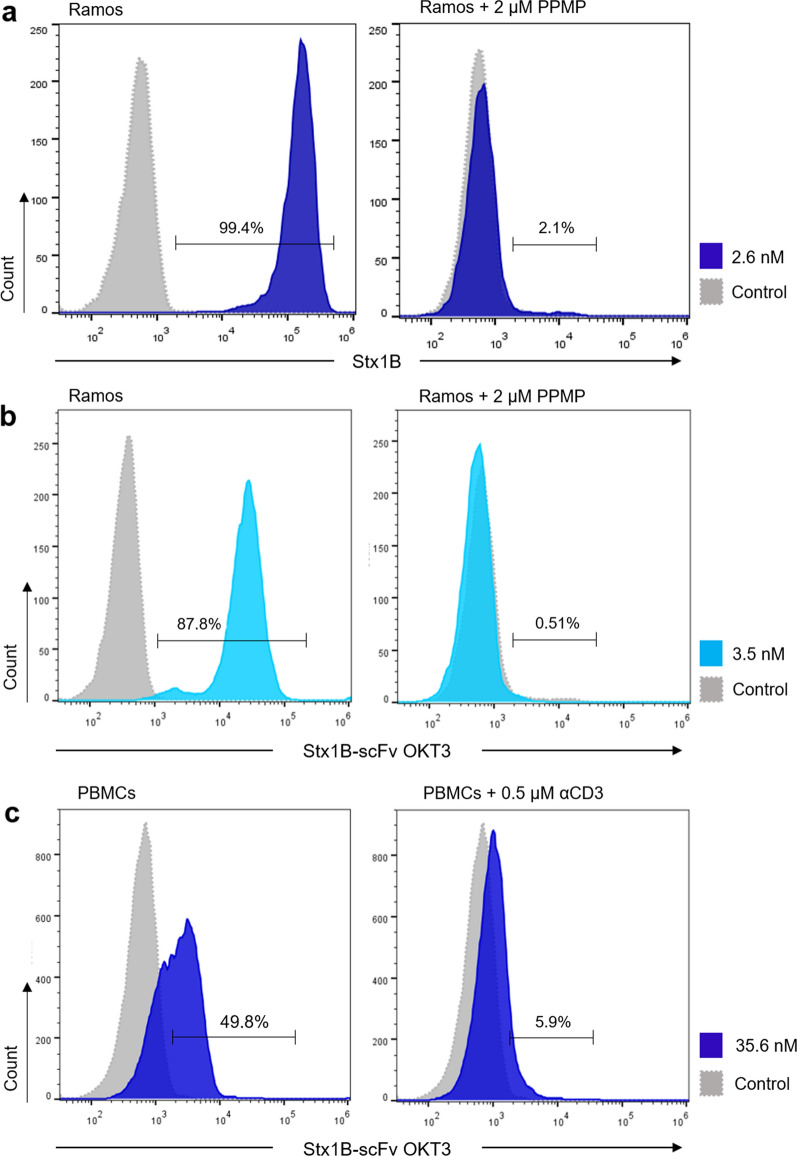Fig. 5.
Binding of the Stx1B-scFv OKT3 lectibody to tumor and effector cells after depletion or saturation of receptors at the plasma membrane. Representative histograms of flow cytometry analysis of gated living a, b Ramos cells, and c PBMCs from healthy donors incubated with Stx1B or Stx1B-scFv OKT3 for 30 min on ice without (left panel) or after (right panel) depletion of receptors from the cell surface. a Histograms of fluorescence intensity of Gb3+ Ramos cells incubated with 2.6 nM Stx1B-Cy5 in the absence (untreated, left plot) or presence (right panel) of the GLS synthesis inhibitor PPMP. At 72 h post-treatment with 2 µM PPMP, Stx1B no longer bound to Ramos cells confirming depletion of Gb3 from the cell surface. b Histograms of fluorescence intensity of Gb3+ Ramos cells incubated with 3.5 nM Stx1B-scFv OKT3. Histograms on the left panel show binding of the lectibody to Gb3 exposed at the surface. In the right plot, flow cytometry analysis of Ramos cells pre-treated for 72 h with PPMP and incubated with Stx1B-scFv OKT3 is presented. In the absence of Gb3, the binding of the lectibody to the plasma membrane was drastically reduced. c Histograms of fluorescence intensity of PBMCs incubated with 35.6 nM Stx1B-scFv OKT3. On the left plot, histograms display lectibody binding to CD3 receptors present at the cell surface. The right plot shows flow cytometry analysis of PBMCs pre-treated with 0.5 µM of anti-human CD3 antibody (αCD3) for 20 min at room temperature, followed by incubation with 35.6 nM Stx1B-scFv OKT3. When CD3 receptors were occupied, binding of the Stx1B-scFv OKT3 lectibody to effector cells decreased remarkably. The number of cells within the live population (y-axis) is plotted against the fluorescence intensity of a Stx1B or b Stx1B-scFv OKT3 (x-axis)

